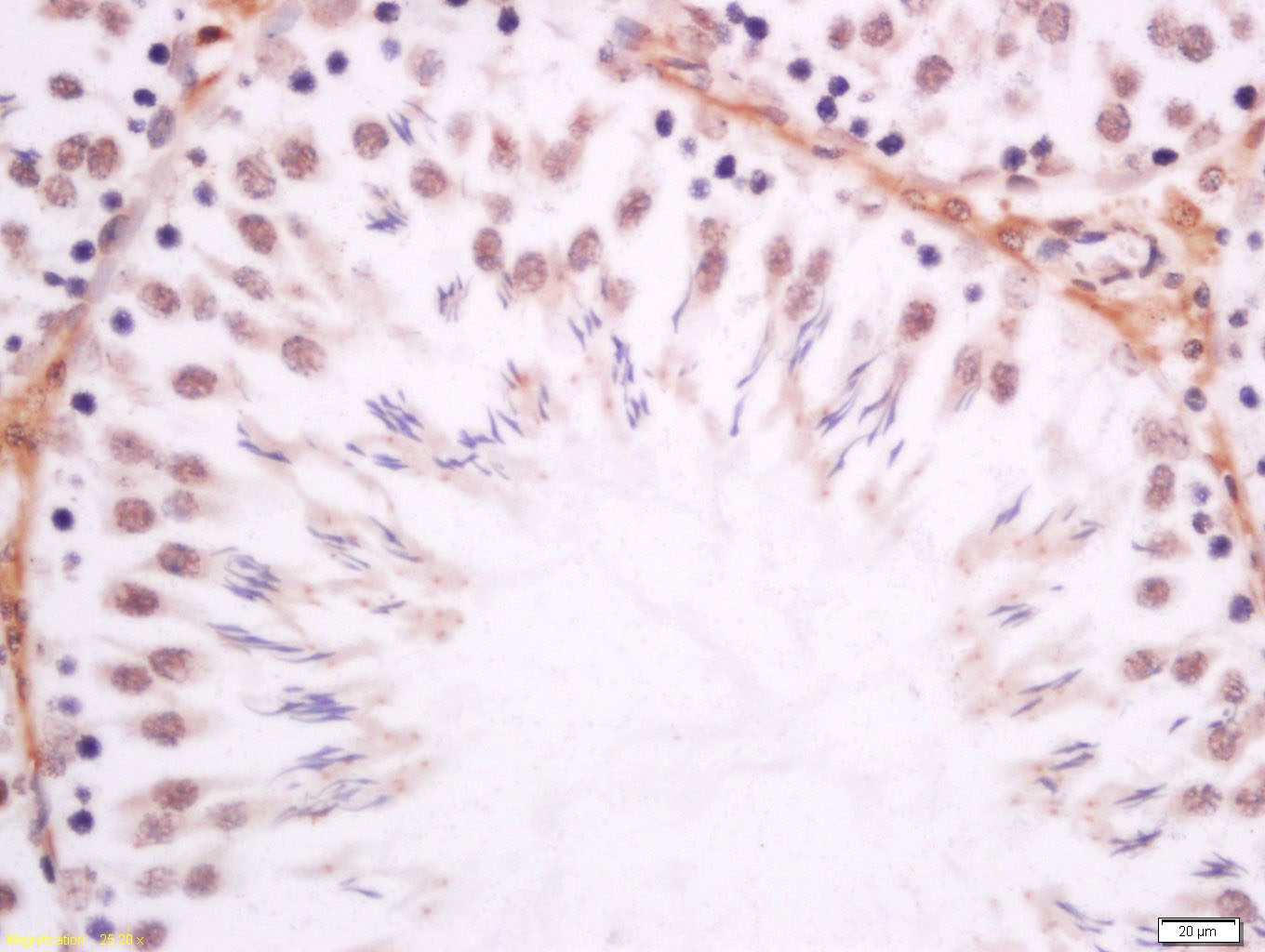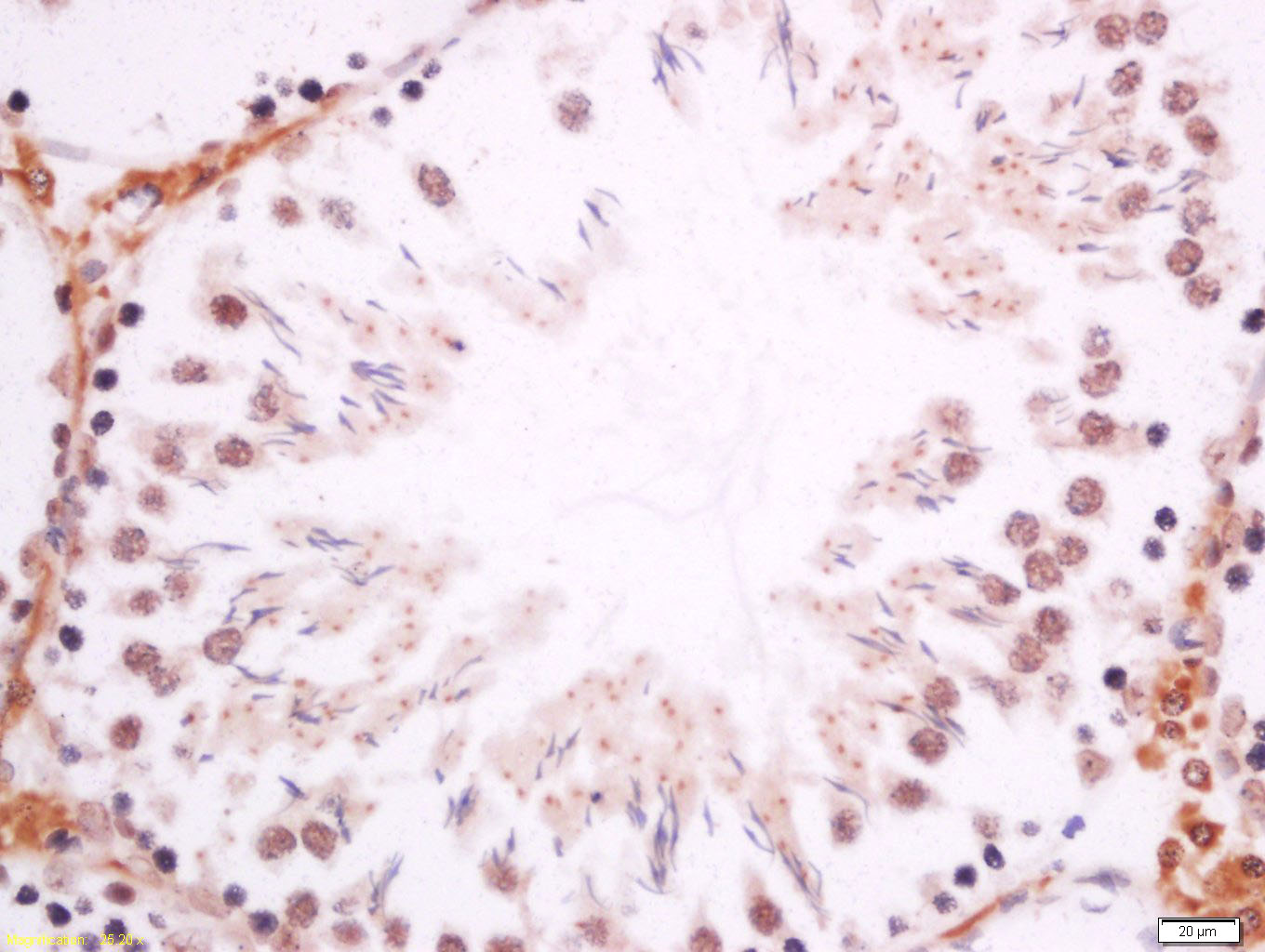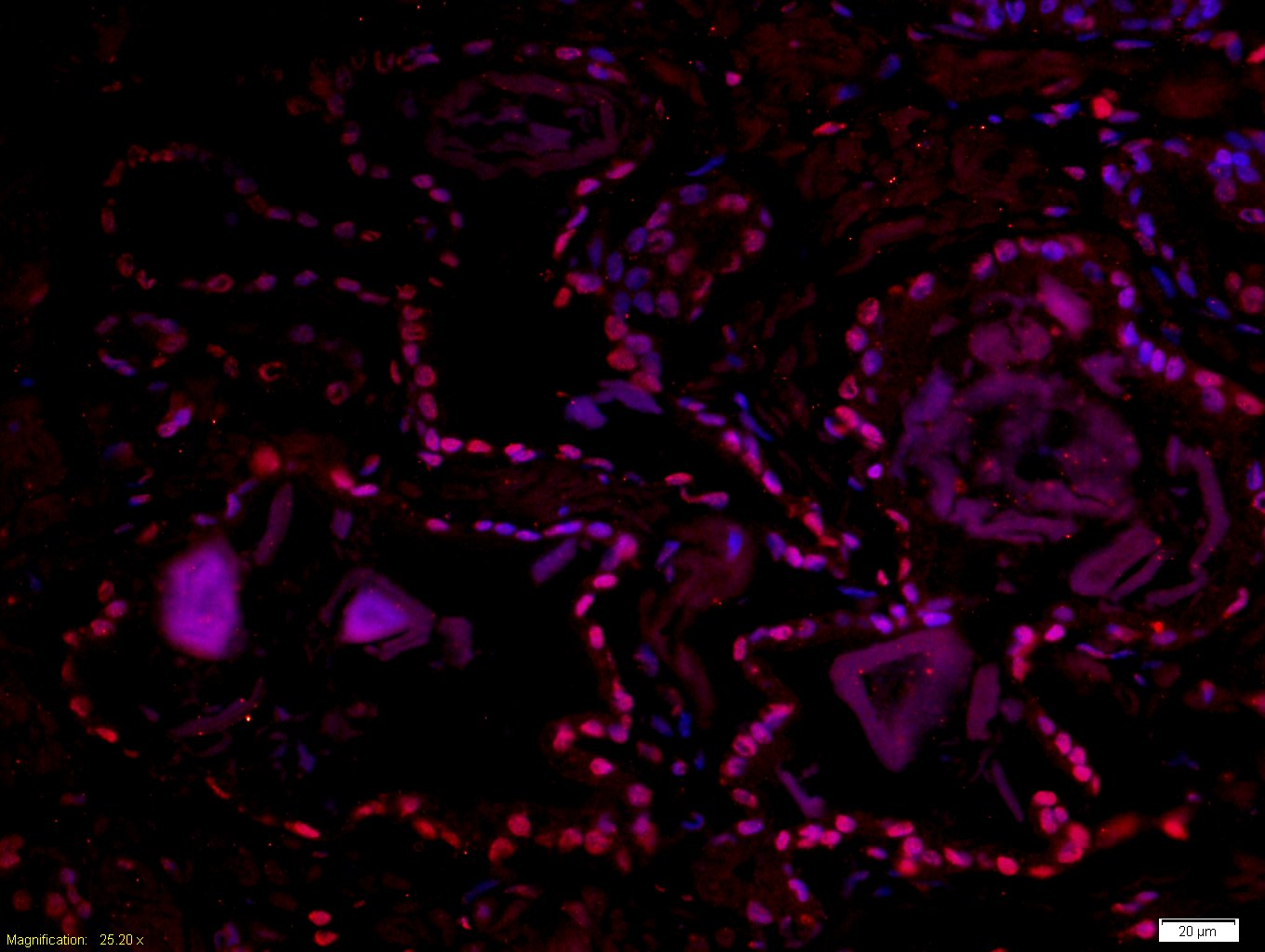
Rabbit Anti-Dmrta1 antibody
DMO; DMRT-like family A1; Dmrt4; DMRTA_HUMAN; Dmrta1; Doublesex- and mab-3-related transcription factor 4; Doublesex- and mab-3-related transcription factor A1.
View History [Clear]
Details
Product Name Dmrta1 Chinese Name 性发育转录因子蛋白DMO抗体 Alias DMO; DMRT-like family A1; Dmrt4; DMRTA_HUMAN; Dmrta1; Doublesex- and mab-3-related transcription factor 4; Doublesex- and mab-3-related transcription factor A1. literatures Research Area Developmental biology transcriptional regulatory factor Immunogen Species Rabbit Clonality Polyclonal React Species Human, Rat, (predicted: Mouse, Dog, Horse, Sheep, ) Applications WB=1:500-2000 ELISA=1:5000-10000 IHC-P=1:100-500 IHC-F=1:100-500 ICC=1:100-500 IF=1:100-500 (Paraffin sections need antigen repair)
not yet tested in other applications.
optimal dilutions/concentrations should be determined by the end user.Theoretical molecular weight 41(h)/53(m)kDa Cellular localization The nucleus Form Liquid Concentration 1mg/ml immunogen KLH conjugated synthetic peptide derived from human Dmrta1: 51-100/373 Lsotype IgG Purification affinity purified by Protein A Buffer Solution 0.01M TBS(pH7.4) with 1% BSA, 0.03% Proclin300 and 50% Glycerol. Storage Shipped at 4℃. Store at -20 °C for one year. Avoid repeated freeze/thaw cycles. Attention This product as supplied is intended for research use only, not for use in human, therapeutic or diagnostic applications. PubMed PubMed Product Detail DMRTA1 is a 504 amino acid protein that localizes to the nucleus and contains one DM DNA-binding domain. Expressed in prostate, liver, pancreas and kidney and present at lower levels in ovary and testis, DMRTA1 is thought to be involved in sexual developmental processes during maturation. The gene encoding DMRTA1 maps to human chromosome 9, which houses over 900 genes and comprises nearly 4% of the human genome. Hereditary hemorrhagic telangiectasia, which is characterized by harmful vascular defects, and Familial dysautonomia, are both associated with chromosome 9. Notably, chromosome 9 encompasses the largest interferon family gene cluster.
Function:
Transcription factor that plays a key role in male sex determination and differentiation by controlling testis development and male germ cell proliferation. Plays a central role in spermatogonia by inhibiting meiosis in undifferentiated spermatogonia and promoting mitosis, leading to spermatogonial development and allowing abundant and continuous production of sperm. Acts both as a transcription repressor and activator: prevents meiosis by restricting retinoic acid (RA)-dependent transcription and repressing STRA8 expression and promotes spermatogonial development by activating spermatogonial differentiation genes, such as SOHLH1. Also plays a key role in postnatal sex maintenance by maintaining testis determination and preventing feminization: represses transcription of female promoting genes such as FOXL2 and activates male-specific genes. May act as a tumor suppressor. May also play a minor role in oogenesis (By similarity).
Subcellular Location:
Nucleus.
Tissue Specificity:
Testis-specific.
DISEASE:
Defects in DMRT1 may be a cause of testicular germ cell tumor (TGCT) [MIM:273300]. A common solid malignancy in males. Germ cell tumors of the testis constitute 95% of all testicular neoplasms.
Defects in DMRT1 may be a cause of 46,XY sex reversal type 4 (SRXY4) [MIM:54230]. A condition characterized by male-to-female sex reversal in the presence of a normal 46,XY karyotype. Patients display complete or partial gonadal dysgenesis and a chromosome 9p deletion.
Similarity:
Belongs to the DMRT family.
Contains 1 DM DNA-binding domain.
SWISS:
Q5VZB9
Gene ID:
63951
Database links:Entrez Gene: 63951 Human
Entrez Gene: 242523 Mouse
Omim: 614803 Human
SwissProt: Q5VZB9 Human
SwissProt: A2AL09 Mouse
SwissProt: Q8CFG4 Mouse
Unigene: 371976 Human
Unigene: 130167 Mouse
Unigene: 43064 Rat
Product Picture
Antigen retrieval: citrate buffer ( 0.01M, pH 6.0 ), Boiling bathing for 15min; Block endogenous peroxidase by 3% Hydrogen peroxide for 30min; Blocking buffer (normal goat serum,C-0005) at 37℃ for 20 min;
Incubation: Anti-Dmrta1 Polyclonal Antibody, Unconjugated(SL11276R) 1:200, overnight at 4°C, followed by conjugation to the secondary antibody(SP-0023) and DAB(C-0010) staining
Tissue/cell: rat testis tissue; 4% Paraformaldehyde-fixed and paraffin-embedded;
Antigen retrieval: citrate buffer ( 0.01M, pH 6.0 ), Boiling bathing for 15min; Block endogenous peroxidase by 3% Hydrogen peroxide for 30min; Blocking buffer (normal goat serum,C-0005) at 37℃ for 20 min;
Incubation: Anti-Dmrta1 Polyclonal Antibody, Unconjugated(SL11276R) 1:200, overnight at 4°C, followed by conjugation to the secondary antibody(SP-0023) and DAB(C-0010) staining
Tissue/cell: human prostate tissue;4% Paraformaldehyde-fixed and paraffin-embedded;
Antigen retrieval: citrate buffer ( 0.01M, pH 6.0 ), Boiling bathing for 15min; Blocking buffer (normal goat serum,C-0005) at 37℃ for 20 min;
Incubation: Anti-Dmrta1 Polyclonal Antibody, Unconjugated(SL11276R) 1:500, overnight at 4°C; The secondary antibody was Goat Anti-Rabbit IgG, Cy3 conjugated(SL0295G-Cy3)used at 1:200 dilution for 40 minutes at 37°C. DAPI(5ug/ml,blue,C-0033) was used to stain the cell nuclei
Bought notes(bought amounts latest0)
No one bought this product
User Comment(Total0User Comment Num)
- No comment





 +86 571 56623320
+86 571 56623320
 +86 18668110335
+86 18668110335

